Not many investors are looking for cryptos to buy in 2022, as the market capitalization of the cryptocurrency market has shed a third of its value since last year. In addition, the market doesn’t seem very rosy further ahead either. The Federal Reserve remains hawkish despite October’s inflation report hinting at slowing but still persistent inflation. Unsurprisingly, this has investors allocating more and more of their portfolios to safer retirement stocks.
So why would anyone be looking for cryptos to buy in this environment?
Cryptocurrencies are very cyclical, and it has been proven time and time again. Many solid projects in the market are going for a bargain right now. Of course, not all of them will do well in the long term; however, the next market rally will undoubtedly see many of these projects surging above their current price. Thus, the recent downturn is a great buy point.
Nonetheless, most crypto projects do not generate any real-world value, and their market capitalization is based more on speculation about the future use of crypto. Thus, you should avoid allocating more than 5% of your portfolio to crypto.
Still, if you can digest the risk mentioned above, buying some of the following 25 cryptos can pay off in the long run, especially in the next crypto bull market.
Monero (XMR-USD)

Source: Wit Olszewski / Shutterstock.com
Monero (XMR-USD) is a cryptocurrency specifically designed for privacy. People cannot view or track Monero’s blockchain, unlike other cryptocurrencies where the blockchain data is public. For example, anyone with the address of a typical blockchain wallet can use the internet to find out the balance of the wallet and all transactions related to the wallet.
On the other hand, all transactions and wallets on Monero are entirely confidential. This is a great selling point for the cryptocurrency as more and more people seek decentralization and privacy. Moreover, most people are uncomfortable with having their crypto balance known to the people they transact with.
Interestingly, even the IRS had a bounty of up to $1.25 million for anyone who could help them crack Monero.
XRP (XRP-USD)
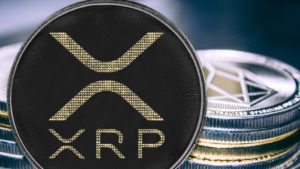
Source: Shutterstock
Ripple Labs’s XRP (XRP-USD) is a highly scalable decentralized public blockchain used by many banks. Banks can use Ripple’s technology to reduce remittance processing costs due to the network’s scalability. Many big names such as Bank of America (NYSE:BAC), PNC Bank, Siam Commercial Bank (OTCMKTS:SMUUY), Santander Bank, and Standard Chartered Bank (OTCMKTS:SCBFY) use the Ripple network in some form.
In addition, many countries are also exploring central bank digital currencies (or CBDCs) built on the Ripple network. Thus, XRP can benefit significantly from the Ripple network spearheading the blockchain’s integration with major financial institutions.
With the tailwinds behind XRP, one may naturally ask why the crypto isn’t outperforming the market. The answer is Ripple’s lawsuit with the Securities and Exchange Commission (SEC) on whether or not XRP is a security. Due to the uncertainty from the lawsuit, XRP’s price is somewhat suppressed and is not listed on several major crypto exchanges.
Fortunately for XRP, things aren’t moving in favor of the Feds, and Ripple has a reasonable chance to win the lawsuit.
Binance Coin (BNB-USD)

Source: Robert Paternoster / Shutterstock.com
Binance Coin (BNB-USD) is the native blockchain of the largest cryptocurrency exchange called the Binance exchange. Binance Coin is unique as it is used for two parallel blockchains. The older one contains less functionality, while the new blockchain is called the Binance Smart Chain (or BSC), similar to Ethereum in functionality.
BSC is a proof-of-stake (PoS) blockchain that allows smart contracts, which means the Binance Smart Chain can host other tokens on the network just like Ethereum. Due to being the largest exchange, many tokens are on the network, including major stablecoins. Thus, the Binance ecosystem is the breeding ground for many Web3 projects, including non-fungible tokens (or NFTs).
The only argument against BNB is that it is more centralized than other major cryptocurrencies. Nonetheless, BNB is a great asset to hold on to in the long term, along with Ethereum (ETH-USD) and Bitcoin (BTC-USD).
Basic Attention Token (BAT-USD)

Source: Stanslavs / Shutterstock
Another one of the cryptos to buy, Basic Attention Token (BAT-USD) is an ERC20 token distributed as a reward to users using the Brave browser. Users who allow ads on the Brave browser can claim the tokens and they can use BAT to tip users on various social media platforms. While it doesn’t have much use case in 2022 except for tipping and earning, I expect more upside for BAT in the next crypto rally.
Brave’s daily active users are on the uptrend reaching nearly 20 million in October. Moreover, the click-through rate for Brave is four times higher than average, and as more advertisers come in, it can drive up the price of BAT in the long run.
Litecoin (LTC-USD)

Source: Shutterstock
Litecoin (LTC-USD) is one of the older cryptos to buy, but it is still widely used for payments. Based on Bitcoin, Litecoin was created to be a “lighter” and faster blockchain suited for day-to-day transactions. For example, Litecoin has a block time of 2.5 minutes compared to Bitcoin’s 10 minutes. It also has a maximum supply of 84 million LTC compared to 21 million BTC.
However, Litecoin has come back to light again after its MimbleWimble upgrade. The upgrade lets Litecoin have similar functionality to Monero and has increased the usage of Litecoin.
Nonetheless, the performance of Litecoin is lackluster as it only acts as a payment method. It is a proof-of-work (or PoW) blockchain with no functionality for smart contracts. I expect it to perform well only if more people use crypto for payments.
Secret (SCRT-USD)

Source: FellowNeko / Shutterstock.com
While Litecoin and Monero are great privacy cryptos to buy, their greatest drawback is that they do not support smart contracts and only act as payment methods. On the other hand, Secret (SCRT-USD) not only allows confidentiality but also has the functionality for smart contracts.
The unique thing about this project is its “private” smart contracts. For example, NFTs, minted through smart contracts, can be accessed by anyone on other blockchains. Meanwhile, NFTs on the Secret blockchain are private; no one except the owner can access them.
The potential of these secret smart contracts is noteworthy. As Coinmarketcap explains:
“Secret’s potential use cases are manifold. For instance, digital content management platforms can use Secret to store a decryption key to the content. After a user pays, the Secret contract shares the decryption key, and the user receives their unique access key. With traditional blockchains, this is not possible since the data is publicly visible.”
Thus, this can be a multibagger investment due to increasing user cases of smart contracts. However, it has struggled in the current market environment.
r/Cryptocurrency Moons (xMOON-USD)

Source: Shutterstock
The native token of the Reddit cryptocurrency subreddit is called r/Cryptocurrency Moons (xMOON-USD). xMOON is earned by users by posting and commenting, and they are distributed each month to subreddit members and mods. Reddit introduced these community tokens last year, and xMOON moved to the Ethereum mainnet three months ago, giving the token quite a boost.
The bull case for moons is that Reddit is a social media giant, and the r/Cryptocurrency subreddit is likely to stay relevant for years to come. This also means that xMOON will likely stay relevant for a long time despite its small market cap.
However, the most significant catalyst for xMOON is that major exchanges could list it in the future, such as Binance and Kraken. The latter exchange is very active on the subreddit. Moreover, Reddit’s upcoming initial public offering (IPO) could also increase the value of these community tokens. There are 5.7 million members on the subreddit, and the token has a market cap of $7.1 million. Thus, I see r/Cryptocurrency Moons being more valuable in the future, making it one of the cryptos to buy.
Ethereum (ETH-USD)
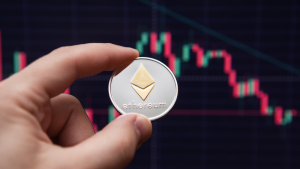
Source: viktoryabov / Shutterstock.com
If I were to name the best cryptocurrency project, it would definitely be Ethereum. The Ethereum blockchain hosts over 695,000 ERC20 tokens and is the go-to platform for minting NFTs, with the vast majority of NFT purchases being made in ETH. It is definitely among the top cryptos to buy as it offers a great balance between potential upside and safety.
Ethereum is the project leading crypto innovation when it comes to Web3, and most development happens in the Ethereum ecosystem. It is constantly upgraded and includes most metaverse tokens, stablecoins, and NFTs. Even better, whenever anyone wishes to transact with any of the ERC20 tokens or purchase NFTs on the Ethereum blockchain, they need to pay gas fees in ETH. That alone is a significant factor that drives demand for Ethereum. The demand for ETH has also caused it to outperform Bitcoin in every crypto bull market since Ethereum’s inception.
Finally, the recent “Merge” upgrade has turned the blockchain into a proof-of-stake (PoS) network, dropping the new supply issuance of ETH by 98%.
Algorand (ALGO-USD), Solana (SOL-USD) and Avalanche (AVAX-USD)

Source: Skorzewiak / Shutterstock
I’ll be grouping the following cryptos to buy as they all follow a similar premise, and their price trends are closely correlated. Algorand (ALGO-USD), Solana (SOL-USD), and Avalanche (AVAX-USD) are all known as “Ethereum killers.” The main selling point for these cryptocurrency projects is that they are better than Ethereum regarding speed and gas fees.
Conversely, the biggest problem for these tokens is that they are lacking when it comes to security and aren’t very stable. For example, the Solana blockchain regularly crashes, while the Avalanche blockchain was nearly crippled by a bug that was triggered by high volume. Algorand is probably the best of the three if you wish to buy any.
The bull case for these Ethereum killers is that they are pretty niche. Their market share consists of developers and users who want to avoid paying the high fees on the Ethereum network or people who wish to avoid a particular shortcoming on Ethereum’s blockchain.
These cryptocurrencies are incredibly cyclical, as they will only perform well when the Ethereum network is congested during a bull market. Nonetheless, if you believe that the second crypto bull run will happen, it is a risky but rational move to buy while they are at a discount.
Finally, I believe it would be more reasonable to buy Ethereum instead, as it dominates the Web3 market share. I would only recommend buying these Ethereum killers if you are willing to sacrifice security over the prospect of more gains.
Nano (NANO-USD) and Banano (BAN-USD)
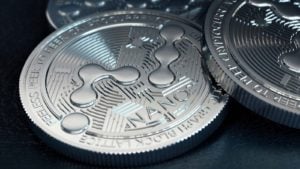
Source: Lucio Libanori / Shutterstock.com
Two cryptos to buy with the same functionality, Nano (NANO-USD) and Banano (BAN-USD) are cryptocurrencies with no gas fees. All transactions on the Nano and Banano blockchain are fast and almost instantaneous. The algorithm is unique as it is a peer-to-peer blockchain with the consensus generated through representative voting. That means people cannot mine or stake BAN or NANO and they have an inflation rate of 0%.
The biggest drawback to both these cryptos is that they lack the functionality of smart contracts. These cryptos essentially serve as payment systems.
Conversely, they are likely to rebound when crypto is used more for payments. In the future, a gasless blockchain will be very attractive when major blockchains are congested. Of course, that is only for people who want to use something other than centralized crypto platforms for payments.
Storj (STORJ-USD)

Source: storj.io
Storj (STORJ-USD) is a project that offers both individual and corporate customers a blockchain-based cloud storage platform. Many companies, such as Amazon’s (NASDAQ:AMZN) AWS, offer cloud storage. But what makes Storj a unique option is that it is peer-to-peer and decentralized. It gives its customers much more privacy than other centralized options.
Storj also doesn’t have data centers. Instead, it pays individuals the STORJ token in return for sharing their storage. All the data is then encrypted and distributed to these storage nodes worldwide. It is based on the Ethereum blockchain.
In addition, the cost to store data on the Storj blockchain is much lower than its centralized counterparts. Combined with the blockchain’s robust security and rejection of censorship, I see Storj becoming a very popular cloud storage option in the future.
Filecoin (FIL-USD)
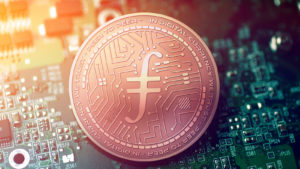
Source: knipsdesign/shutterstock.com
Filecoin (FIL-USD) is another blockchain cloud storage platform. The difference between Filecoin and Storj is that Filecoin is much more decentralized. Storj accepts direct payments from customers, while Filecoin allows its users to interact and settle payments themselves on the blockchain using the FIL token. It is much more suited for trading raw data than Storj.
Filecoin is more likely to attract individuals seeking an elevated level of privacy, while developers or corporate customers better suit Storj.
Furthermore, Filecoin has its own blockchain yet maintains the technology to integrate with the Ethereum blockchain. Thus, the fees for moving FIL are much lower than STORJ or other ERC20 tokens, and the project is more flexible. If you are looking for storage cryptos to buy, I recommend FIL more than Storj.
Finally, the market cap of Filecoin is at $1.4 billion compared to $130 million for Storj. The larger market cap will make Filecoin more stable, and customers are always more likely to use the more reputable platform. Thus, FIL is the best if you are looking for blockchain storage cryptos to buy.
Nervos Network (CKB-USD)

Source: Shutterstock
The Nervos Network (CKB-USD) is a promising altcoin that seems very oversold. The tokenomics of this project are very well thought out, and it is very efficient.
The bullish argument for Nervos Network is that it efficiently connects almost every cryptocurrency asset, making them interoperable and flexible no matter what network they are on. For example, it can scale large projects such as Bitcoin and Ethereum. Moreover, the Nervos Network allows layer 2 scaling and smart contracts while following the proof-of-work protocol. It also allows developers on other blockchains to seamlessly integrate with the Nervous Network and expand their projects there. Simply put, this project offers a lot of flexibility and potential.
Conversely, the bearish argument is that the Nervos Network is an underperformer. Its market cap is a tenth of what it used to be in late 2021. The project needs more popularity to attract more investment. Unfortunately, it won’t happen in this environment where scaling solutions and interoperability are less needed.
Nonetheless, looking at how other layer 2 projects performed in 2021, the Nervos Network holds much potential when the next crypto bull market comes.
Uniswap (UNI-USD)

Source: Tun_Thanakorn / Shutterstock
If you’ve been following the news, you’ve likely heard about the FTX (FTX-USD) exchange collapsing. FTX is a regulated and licensed cryptocurrency exchange, and it still collapsed. The liquidity crisis has caused the exchange to stop all withdrawals from the platform, and investors could lose billions due to the platform’s mismanagement of funds. Looking at how centralized cryptocurrency exchanges are now under scrutiny, it is only natural that they will face more regulation.
However, decentralized exchanges such as Uniswap (UNI-USD) will be among the biggest beneficiaries of this crisis. The most popular decentralized cryptocurrency exchange is Uniswap, and it is fully automatic. For governance, the platform uses the UNI. The platform has nearly $4 billion in total value locked (or TVL), and its trading volume is surging due to the FTX crisis.
Still, Uniswap is only compatible with Ethereum-based ERC20 tokens and offers less functionality than centralized exchanges. However, I still see more upside for UNI due to its growing popularity and usage.
Dogecoin (DOGE-USD)

Source: Shutterstock
Dogecoin (DOGE-USD) is a well-known cryptocurrency that has declined since May 2021. This cryptocurrency exploded in early 2021 as people had a lot of spare cash to invest in useless assets. Ultra-low interest rates and stimulus packages made meme coins and meme stocks soar to all-time highs. However, the primary reason why people bought this crypto is that Elon Musk promoted this project.
The hype lasted only a short time, and despite many tweets from Elon about Dogecoin, it continued on its downtrend until stabilizing at six cents by July. However, Dogecoin has soared again after Elon Musk bought Twitter. The most popular theory is that Elon Musk could integrate Dogecoin with Twitter and allow Dogecoin to process purchases and tips.
Of course, Dogecoin is not a cryptocurrency with many use cases. However, it is relatively fast, and Elon Musk seems very committed to Dogecoin. It also has the founder of Ethereum on its board and has a roadmap that aims to transform Dogecoin’s network to a PoS protocol.
If Elon Musk does add it to Twitter, there is a lot of upside for Dogecoin. However, development is still slow, and it isn’t something I will recommend holding for the long term. Excitement drives the price of Dogecoin, but it also dies down quite quickly. Thus, if you wish to buy Dogecoin, do it when the price declines to a more acceptable level.
SingularityDAO (SDAO-USD)

Source: JLStock / Shutterstock.com
if you are interested in more potential upside, look into SingularityDAO (SDAO-USD). It is an autonomous digital organization (or DAO). The platform allows users to manage crypto assets using “automated trading strategies leveraging AI-enhanced data analytics services.” The most significant selling point of SingularityDAO is its DynaSets. It explains the following on its website:
“DynaSets are bringing the sophisticated risk-management strategies of AI-powered portfolio management to DeFi, using advanced data science backed strategies developed in-house by a world class team of quant analysts, to dynamically rebalance and optimise sets of tokens.”
In the beta testing period, these DynaSets reportedly “saw its Bitcoin and Ethereum products generate growth in holdings of the underlying assets by 61% and 111% respectively” according to Businesswire.
SDAO is still holding on in the current market condition. There might be more potential growth as over the next two quarters, SingularityDAO is looking to announce an amass of products. So far, SingularityDAO has delivered on its promises. Thus, it is one of the smaller projects to look into.
Chainlink (LINK-USD)

Source: Gorev Evgenii / Shutterstock.com
Getting back to more stable and established tokens, Chainlink (LINK-USD) is a very promising project. Simply put, Chainlink converts the data outside of a particular blockchain and then feeds it into said blockchain. For example, for a smart contract to execute, it needs to meet some prerequisites on a blockchain. If these conditions include data or information outside of the blockchain, Chainlink can convert it and then import it to the said blockchain.
Of course, it is more complex than that. However, my argument is that Chainlink is a project that will be very useful if smart contracts become mainstream. The use cases for these smart contracts only keep growing; thus, it is not irrational to think that there could be a lot of real-world use cases for these smart contracts. Accessing data off-chain will be a significant problem, and Chainlink has the solution. In addition, Chainlink aims to integrate itself with all the blockchains that support smart contracts. Ethereum already integrates Chainlink.
LINK currently has a market cap of $3.4 billion, and more short-term decline is possible. However, this token has a significant upside in the long run, especially if smart contracts keep finding more use cases.
Cronos (CRO-USD)

Source: Voar CC / Shutterstock.com
Cronos (CRO-USD) is a cryptocurrency developed by Crypto.com, one of the largest cryptocurrency exchanges. The exchange has over 50 million users and offers crypto debit cards. Thus, with the backing of Crypto.com, CRO will have more longevity than other cryptos to buy in this article.
CRO is similar to Binance’s BNB coin as it runs parallel to another blockchain. However, it is much more recent and volatile than BNB, as it has fallen over 90% from its all-time high of 96 cents a year ago. TVL has also declined from a peak of $3.2 billion to around $740 million today. As a result, its market cap has fallen to $2.3 billion. In addition, the collapse of its rival FTX is also a risk factor for CRO, as investors aren’t as confident.
Nonetheless, being the native token of an ecosystem of 50 million users, I see more upside in the long term. Cronos’ CEO has also stepped forward and promised to release audited proof of reserves. Moreover, in the next crypto bull market, Cronos will likely return multibagger gains as exchanges usually face a massive influx of users.
I still recommend that investors choose BNB instead, as it is much more stable. The only argument for choosing CRO instead will be if you are willing to sacrifice stability for more upside, as Cronos’ small market cap will amplify the gains in the next rally. However, it will also amplify any downturns.
Polygon (MATIC-USD)

Source: sdx15 / Shutterstock.com
Polygon (MATIC-USD) is a layer 2 scaling solution for Ethereum. To summarize, Polygon acts as a protocol running on top of the base layer, which is the Ethereum blockchain. As I’ve explained earlier in this article, things can get very slow and costly when the Ethereum network is congested. On average, Ethereum can process around 35 transactions per second (or TPS). On the other hand, Polygon can process up to 65,000 TPS on a single side chain. Thus, Polygon being a faster secondary layer that mitigates the expensiveness of the Ethereum blockchain is very popular among developers.
Polygon is also aiming to create more interoperability between Ethereum-compatible blockchains. It supports almost every scaling solution one can think of — namely, Matic Plasma, ZK Rollups, Optimistic Rollups, and Validum Chains.
Without continuing with the jargon, it is easy to apprehend that Polygon is all about tech. The project might be less popular for end users, but developers definitely love it, and I see a lot more upside to it when the market turns bullish again. Thus, it is one of the top cryptos to buy in my book, especially if you are optimistic about Ethereum.
Stellar (XLM-USD)

Source: Shutterstock
If the risk from Ripple’s XRP lawsuit was a turnoff, Stellar (XLM-USD) might be for you. It is a decentralized peer-to-peer network and aims to link various financial institutions using blockchain technology. The Stellar network makes cross-country transactions much easier and faster by making it possible to swap currencies or cryptocurrencies easily.
Stellar is similar to XRP as this project is a hard fork of Ripple’s blockchain. The founder of Stellar is also the co-founder of Ripple. Another thing it has in common with Ripple is that many institutions use it. More than 800 companies use the XLM blockchain, the largest among which are IBM (NYSE:IBM) and MoneyGram International (NASDAQ:MGI). Thus, Stellar is a project at the forefront of integrating the blockchain with traditional finance, just without the lawsuit risk that Ripple faces.
If you believe blockchain technology will be mainstream in the future, Stellar should be one of the cryptos to buy. In the last crypto bull cycle, many financial institutions adopted Stellar and blockchain technology, which will only increase once the next one comes around.
Paxos Gold (PAXG-USD)

Source: Praveen Nanu / Shutterstock.com
Paxos Gold (PAXG-USD) is a gold-backed cryptocurrency that makes investing in gold much easier if you already hold crypto. According to Coinmarketcap:
“Each PAXG token is backed by a fraction of a piece of London Good Delivery gold bar, stored in Brink’s gold vaults, which is the approved storage company by the London Bullion Market Association.”
This cryptocurrency is unique because it is one of the few tokens with real-world commodities backing their value. As a result, PAXG has very little price correlation with the rest of the crypto market. Paxos Gold also moves very closely with the price of gold, which is why it isn’t prone to flash crashes in the crypto market. Moreover, PAXG tokens run on the Ethereum blockchain, making it one of the safer cryptos to buy.
Bitcoin (BTC-USD)

Source: Momentum Fotograh / Shutterstock.com
At the caboose of this article is Bitcoin (BTC-USD). Excluding stablecoins, it is the safest cryptocurrency you can buy. Bitcoin doesn’t have smart contract functionality or a high TPS, but its age and popularity make it an evergreen investment that will pay dividends if you have the patience to hold it for a long time.
The most significant bull case for Bitcoin is its halving in the second quarter of 2023. The halving happens every 210,000 blocks, and when the 840,000th block is mined sometime in 2023, all mining rewards are cut in half, thereby reducing the supply of Bitcoin. Looking at the historical chart of this asset, the correlation between BTC halving and a crypto bull market is very clear, as it causes a massive disparity between supply and demand.
Moreover, Bitcoin’s scalability problems are no longer consequential due to various layer 2 scaling solutions and third-party exchanges that make day-to-day transactions fast and cheap. Thus, if any cryptocurrency is to become the future payment system, it will most likely be Bitcoin.
Finally, I recommend putting most of your crypto investments into Bitcoin and Ethereum. They are simply the best cryptos to buy. There is no guarantee that altcoins will stay relevant. There is also a risk that they will not perform as well in the next bull market. Playing it safe is never a bad idea, so stick with BTC and ETH as much as possible.
On Low-Capitalization and Low-Volume Cryptocurrencies: InvestorPlace does not regularly publish commentary about cryptocurrencies that have a market capitalization less than $100 million or trade with volume less than $100,000 each day. That’s because these “penny cryptos” are frequently the playground for scam artists and market manipulators. When we do publish commentary on a low-volume crypto that may be affected by our commentary, we ask that InvestorPlace.com’s writers disclose this fact and warn readers of the risks.
Read More: How to Avoid Popular Cryptocurrency Scams
On the date of publication, Omor Ibne Ehsan did not have (either directly or indirectly) any positions in the securities mentioned in this article. The opinions expressed in this article are those of the writer, subject to the InvestorPlace.com Publishing Guidelines.
Read More: news.google.com

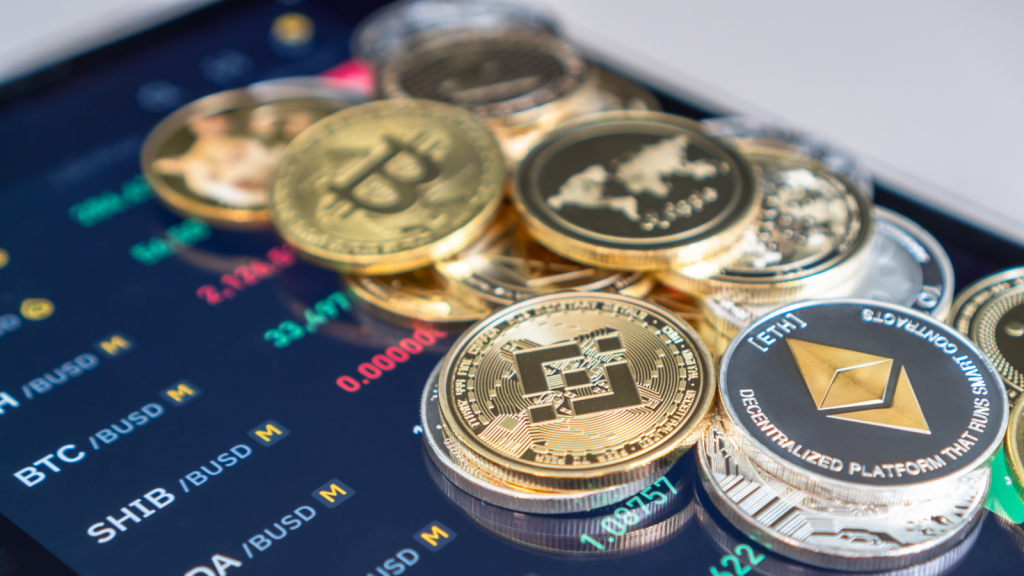







 Bitcoin
Bitcoin  Ethereum
Ethereum  Tether
Tether  XRP
XRP  Solana
Solana  Dogecoin
Dogecoin  USDC
USDC  Cardano
Cardano  Lido Staked Ether
Lido Staked Ether  TRON
TRON  Sui
Sui  Avalanche
Avalanche  Wrapped stETH
Wrapped stETH  Toncoin
Toncoin  Shiba Inu
Shiba Inu  Chainlink
Chainlink  Stellar
Stellar  Wrapped Bitcoin
Wrapped Bitcoin  Hedera
Hedera  Polkadot
Polkadot  WETH
WETH  Bitcoin Cash
Bitcoin Cash  LEO Token
LEO Token  Uniswap
Uniswap  Litecoin
Litecoin  Pepe
Pepe  Hyperliquid
Hyperliquid  Wrapped eETH
Wrapped eETH  NEAR Protocol
NEAR Protocol  USDS
USDS  Ethena USDe
Ethena USDe  Aptos
Aptos  Internet Computer
Internet Computer  Aave
Aave  Mantle
Mantle  Cronos
Cronos  POL (ex-MATIC)
POL (ex-MATIC)  Ethereum Classic
Ethereum Classic  MANTRA
MANTRA  Render
Render  Monero
Monero  Bittensor
Bittensor  Artificial Superintelligence Alliance
Artificial Superintelligence Alliance  Dai
Dai  Tokenize Xchange
Tokenize Xchange  Filecoin
Filecoin  Arbitrum
Arbitrum